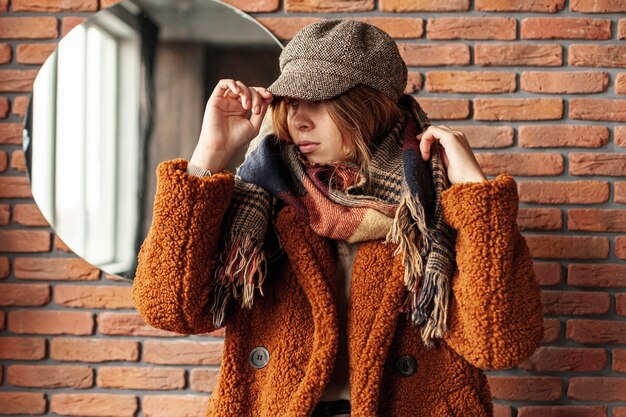
Sponsored article
Navigating the transitional seasons can be a style conundrum, with fluctuating temperatures making it a challenge to dress comfortably yet fashionably. Layering is an essential skill that allows you to adapt to changing weather with ease, involving strategic combinations of clothing pieces to achieve warmth, style, and functionality. Whether you’re preparing for a breezy spring day or a crisp autumn afternoon, mastering the art of layering ensures you maintain both comfort and elegance in your wardrobe choices.
Choosing the right base layers is crucial for mastering the art of layering, especially during transitional seasons when temperatures can fluctuate dramatically throughout the day. The key to comfort and optimal body temperature regulation lies in the material choice. When considering fabric types, opt for breathable clothing that adapts to varying weather conditions, such as moisture-wicking merino wool or lightweight, quick-drying synthetic blends. These materials ensure that you stay dry and comfortable, preventing the unpleasant clamminess caused by perspiration build-up.
Additionally, cotton, known for its softness and comfort, is ideal for milder days; however, it can become a poor choice if wet weather is expected, as it retains moisture and can feel heavy. Investigating advanced textile options, like modal or bamboo, could also provide eco-friendly and breathable solutions for those environmentally conscious. Remember, the perfect base layers will not only support your style but also enhance your overall comfort and adaptability, no matter what weather transitions may come your way.
Mastering the art of layering for transitional seasons involves understanding how to effectively accommodate different activities with your wardrobe choices. For athletic pursuits, consider layering for sports with moisture-wicking base layers that allow freedom of movement, combined with lightweight fleeces or windbreakers that can be easily removed during intense activity. For casual layering, focus on comfort and style with versatile clothing such as button-up shirts, medium-weight cardigans, and tailored jackets that can transition from a stroll in the park to a casual dinner. The key to casual layering is to opt for pieces that can be mixed and matched, ensuring you are both comfortable and fashion-forward throughout your day.
When it comes to layering for outdoor activities, prioritize adaptable clothing that offers both warmth and breathability. A strategic approach may include:
These layering strategies ensure your comfort and adaptability, no matter the activity or weather, emphasizing a versatile clothing approach that keeps you prepared and stylish.
Accessorizing your layered look isn’t just about adding items; it’s about selecting fashion accessories that enhance layering and boost your overall appearance. Scarves can serve as a functional and stylish addition, providing warmth while bringing in a splash of color or texture to your ensemble. Opt for a chunky knit scarf for a cozy feeling during cooler days, or choose a silk scarf for a lighter and more polished effect. Scarves aren’t only for the neck; try tying one around a handbag handle for an unexpected twist. Hats are another versatile accessory that can dramatically shift your outfit’s vibe. From a classic fedora to a trendy beret, hats offer both style and practicality, keeping you warm and elevating your layered look.
Belts can cinch layers together, adding structure and definition to your silhouette. Whether you choose a wide belt over a coat to create an hourglass shape or a skinny belt to accentuate your waist over multiple layers, this accessory can anchor different pieces of your outfit. Don’t hesitate to mix and match textures and colors in your accessories to express personal style and taste. Embrace these style tips to master accessorizing your layers with belts, hats, and scarves, ensuring your layered outfits are not just warm but also chic and memorable during transitional seasons.